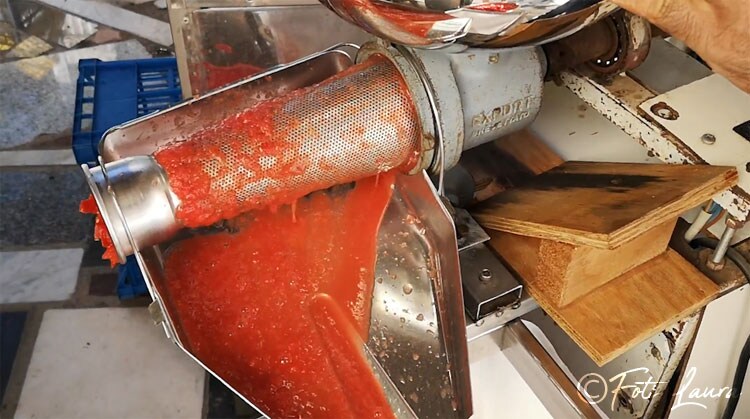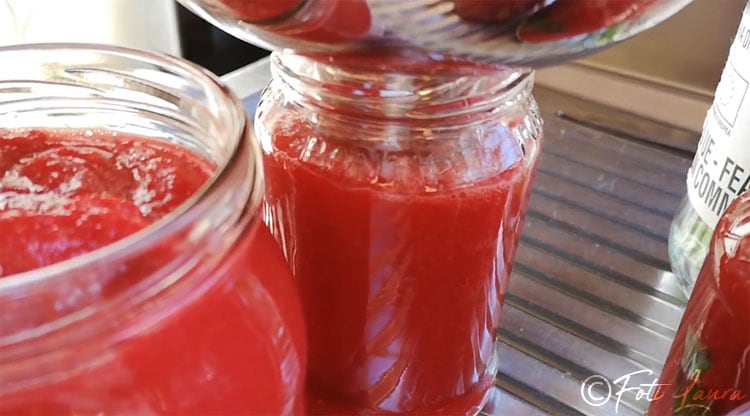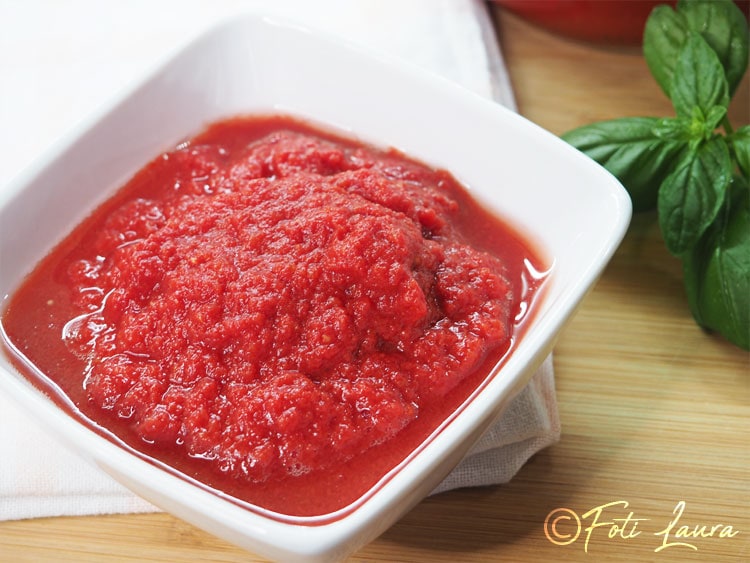Making homemade tomato sauce is easier than you think! With a few ingredients and some tips, you can preserve all the summer flavor in a jar, ready to be used in your favorite recipes.
This traditional recipe will guide you step by step to achieve a thick, flavorful, and safe sauce to store all year long. I’ll explain which tomatoes to choose, how to remove excess water, and how to sterilize jars for a perfect result.
Discover all the tricks for a fragrant and genuine homemade tomato preserve!
Before you proceed, I recommend taking a look at the guidelines from the Ministry of Health for proper preparation of food preserves.

- Difficulty: Easy
- Cost: Economical
- Cooking methods: Boiling
- Cuisine: Italian
- Seasonality: Summer
Ingredients
- tomatoes
- basil
Step-by-step Preparation
The quality we used is Big Rio, but any good quality tomato is fine for the sauce.
To prepare the homemade tomato sauce, start by thoroughly washing the tomatoes.
Cut the tomatoes in half and remove the stem area, making sure there is no rot. If there is rot, cut off a large part and discard it, or if the tomato is heavily affected, discard it entirely, especially if it shows signs of acidity.

There are three options now.
1) You have a food mill
2) You have a medium-powered tomato machineIn these two cases, you need to blanch the tomatoes. So, put them in a pot and let them wilt over low heat until they are very soft, then you can proceed to press them with a food mill or a tomato machine, scooping them out of the pot with a colander so that the tomato water remains at the bottom.
With the water at the bottom, you can strain it through a fine-mesh sieve or use a clean cotton or linen cloth to extract a little more sauce.3) High-powered tomato machine
You can press the tomatoes raw without the risk of pulp and skins clogging the spiral or pressing holes.

In my case, it’s a raw pressing where the sauce will fall directly into a cotton bag and the skins into a bowl where they will be reprocessed several times.
Once the raw sauce is obtained, I’ll discard the excess water filtered through the cloth, keeping a little aside in case the sauce turns out too thick.
From here, the steps are the same for everyone. Insert a few freshly picked basil leaves into clean jars or glass bottles and pour the sauce using a ladle or a container with a spout and a funnel, leaving about 1 inch from the top.

Close the jars with new lids suitable for boiling, or if they are bottles, with new crown caps. If your caps show signs of wear, rust, or corrosion, discard them and replace them with new ones.
Place them in a large pot with cloths or towels at the base and put spacers between jars so they do not move during boiling.

Fill the pot with water until it covers and turn on the heat, and after it starts boiling, cook for an hour and a half, then turn off the heat and let cool. Once cool, remove the jars and store your homemade tomato sauce in your pantry.

Storage
The tomato sauce can be stored for one year if vacuum sealing has been properly achieved.
How to tell if vacuum sealing has been successful?
The lids suitable for boiling have a bulge in the center. If, after boiling, you press on the lid surface and it makes a noise, then vacuum sealing did not occur, and it is advisable to consume the sauce as soon as possible or, if boiling just finished, to tighten the lid well or replace it and attempt boiling again.
Ministry of Health Guidelines
Regarding this, I recommend reading the guidelines from the Ministry of Health for proper preparation of food preserves.
Storage After Opening
Once opened, it is recommended to store the jar in the fridge and consume it as soon as possible, for up to a week, but always check visually and by smell before consuming.
If the product appears altered, it is advised to discard it.
Have you tried making diced tomato preserves?
Did you know you can also preserve diced tomatoes? CLICK HERE
Did you know you can also preserve diced tomatoes? CLICK HERE

